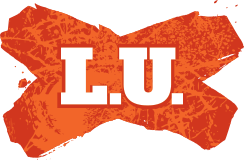I felt Penrith were set up for two plays, the FG and the overlap play on their left side.
If Moses or Cleary gets the ball and passes with Grant committing to the same action, it’s play on.
In my head, irrespective of this result, if you have a clear path, but instead throw an arm out and contact a defender, you’re committing to that defender. It’s the same with obstruction plays. Under review, discretion per the rule and is applicable so far as the disadvantage of being impeded. It is based on the initial contact and proximity to determine if an advantage was gained. As with most FG situations, the likelihood that grant makes it another 10m or so to pressure Cleary is how the rule applies for block plays every other time.
Ultimately, Grant had to shut down two plays, the FG and the set play for the overlap. He killed both successfully,
The other issue is where a defender can and cannot stand. If a defender provides enough space for clear passage, why does the rule reward the defending team in a points scoring situation but is often ignored any other time a team could be seen to have gained an advantage, For EG: The attacking team is deep in their own half and on 5th tackle the marker has to run around a decoy, kick clears and it’s play on more often then not. The advantage for the defending team is ignored or not applied in the same way by the same rule.
